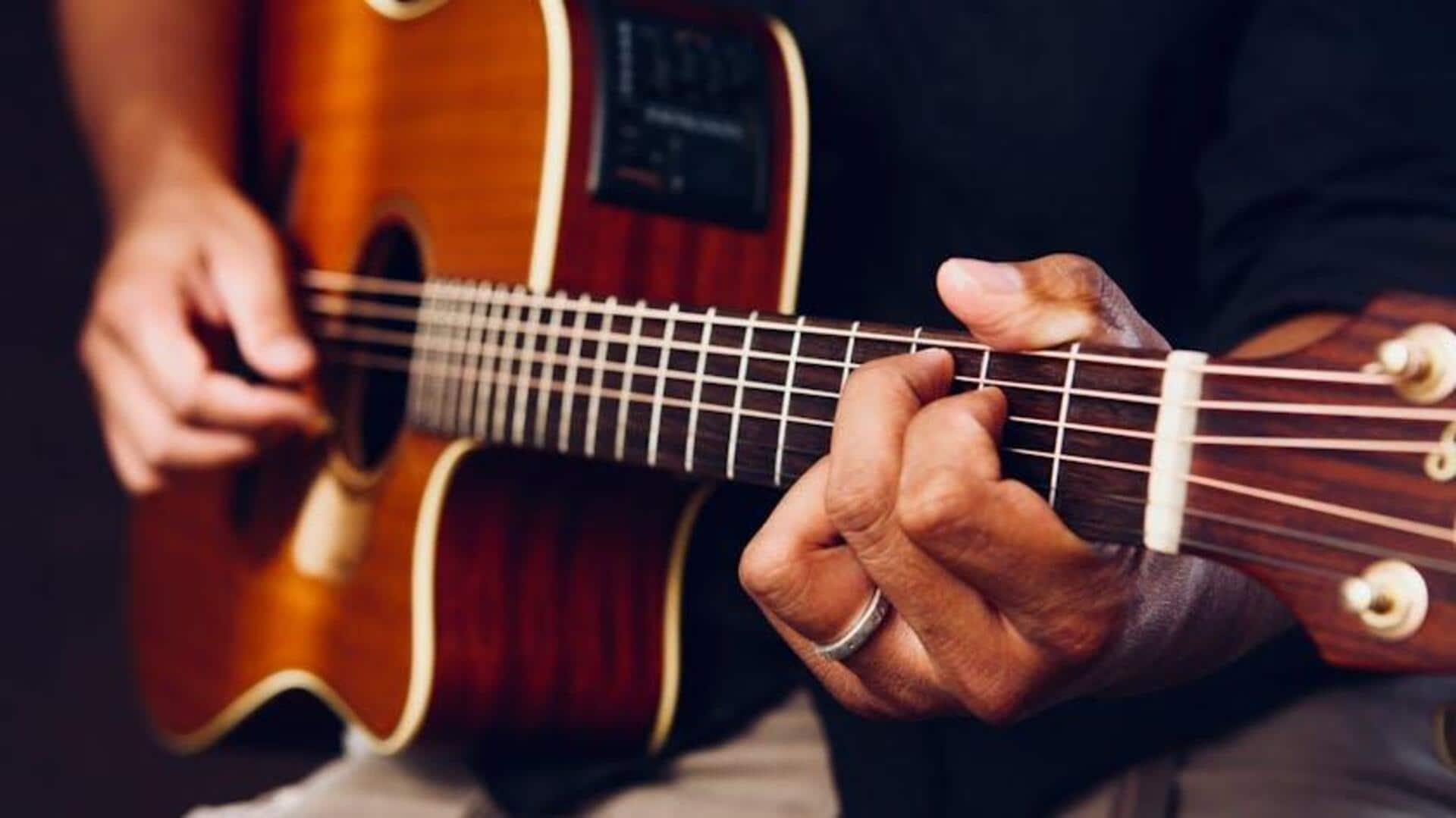
Want better precision on guitar? Try these techniques
What's the story
Mastering fingerstyle guitar takes dedication, practice, and the right exercises. For guitarists striving to improve their precision and speed, adding thumb pick exercises to their practice regimen can be a game-changer. These exercises focus on building the thumb's dexterity, leading to greater control and versatility in your playing. In this article, we have compiled five excellent thumb pick exercises suitable for different skill levels.
Foundation
Basic thumb picking patterns
Start with simple thumb picking patterns to establish a strong foundation. Assign your thumb to the bass strings (E, A, and D) of your guitar. Practice playing simple patterns such as alternating between the E and A strings in a steady rhythm. Strive for clarity and consistency in each note. As you gain confidence, gradually increase the tempo, ensuring each note remains distinct.
Rhythm Mastery
Syncopation techniques
Syncopation is all about accentuating off-beats or weaker beats in music. Practice this with a thumb pick by striking an off-beat note, pausing for a rest, and then playing a softer note on the beat. This technique enhances your timing and introduces sophistication to your style. Start slowly to prioritize accuracy, then gradually build up speed.
Chord exploration
Arpeggio exercises
Arpeggios are simply broken chords where you play the notes one at a time instead of all together. Using a thumb pick can greatly improve your articulation and speed when playing arpeggios. Choose a chord and practice playing its individual notes in sequence. Concentrate on making the transitions between strings as smooth as possible. Try different chords so your thumb gets used to different string distances and tensions.
Volume variation
Dynamic control drills
Control over dynamics is key to expressive playing. Start by plucking a string gently, then progressively apply more force until you reach maximum volume, and finally reduce back to a soft touch. This exercise builds control over your attack strength, a fundamental skill for dynamic performance. Strive for even volume changes.
Tempo increase
Speed building challenges
To build speed without losing accuracy or feel, create metronome "games" or challenges where you gradually increase the tempo as you master each level. Start slow (where you can play perfectly), then bump the metronome up 5 bpm once you can nail it three times in a row without mistakes at that tempo.